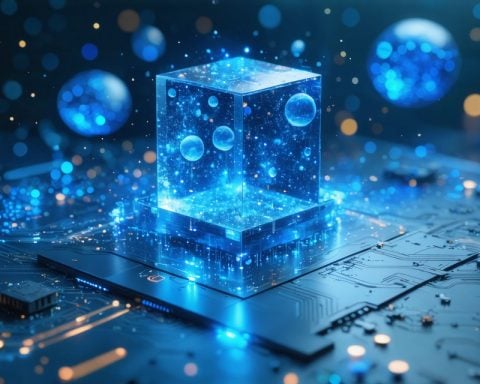Chinese EVs Set to Challenge South Korea’s Automotive Landscape
In a bold move, BYD, the leading electric vehicle manufacturer from China, is preparing to launch its electric cars in South Korea by 2025, sparking debates about the possible disruption of the local automotive industry. As one of the top players chasing Tesla’s lead in global sales, BYD could shift the dynamics of the EV market.
Despite its ambitious entry, BYD faces challenges rooted in a similar experience in Japan. Upon debuting in Japan in 2022, the company aimed to sell 30,000 vehicles annually but ended with only 3,669 units by late 2024, falling short amid strong domestic brand loyalty and skepticism towards Chinese products. South Korea’s market paints a similar picture, with local brands capturing a significant 83.8% of passenger car sales.
Moreover, consumer sentiment poses another hurdle; a recent survey indicated that only 9% of prospective buyers would consider a Chinese electric vehicle, with many rejecting them outright, regardless of pricing. However, there is a bright side. If BYD and others adopt aggressive pricing strategies, offering vehicles at 50-60% of the cost of Korean models, many consumers could be swayed.
With new models like the Atto 3 SUV priced competitively and the possibility of utilizing local manufacturing plants, BYD’s strategy could reshape the EV landscape in South Korea, especially as domestic automakers ramp up investments to maintain their market shares.
Chinese EVs Poised to Transform the South Korean Automotive Market
Overview of BYD’s Entry into South Korea
Chinese electric vehicle (EV) manufacturer BYD is gearing up for a significant launch of its electric cars in South Korea by 2025, marking a pivotal moment that could disrupt the local automotive industry. As a leading contender in the global EV market, alongside Tesla, BYD’s entry is expected to intensify competition in a sector already dominated by local brands.
Background: The Competition Landscape
Currently, local South Korean automotive manufacturers command approximately 83.8% of the passenger car market. This stronghold is a result of established consumer loyalty and the success of domestic brands such as Hyundai and Kia, which have cultivated a loyal customer base through their reputation for quality and innovation. In contrast, BYD recently faced hurdles in Japan, where it aimed to sell 30,000 units annually but only managed to sell 3,669 vehicles by late 2024. The challenges in Japan underscore potential barriers to entry in South Korea, where consumer sentiment shows a significant preference for homegrown brands.
Consumer Sentiment and Market Challenges
A recent survey revealed that only 9% of South Korean consumers would consider purchasing a Chinese EV, highlighting deep-seated skepticism toward products from China. Despite this, industry experts suggest that aggressive pricing tactics could change the game. If BYD were to offer vehicles at 50-60% lower prices than comparable Korean models, it could attract a substantial number of price-sensitive consumers.
Strategies for Success
1. Competitive Pricing: BYD is anticipated to leverage competitive pricing strategies to penetrate the market effectively. If they manage to provide high-quality vehicles at lower prices, it could stir interest among consumers who are currently loyal to domestic brands.
2. Local Manufacturing: Beyond pricing, BYD’s potential use of local manufacturing plants could bolster their strategy. Local production might not only reduce costs and logistical challenges but also improve public perception by creating jobs and investing in the local economy.
3. New Models: The introduction of the Atto 3 SUV and other models positions BYD to capture the interest of various consumer segments. These models are expected to meet the rising demand for environmentally friendly vehicles amid increasing environmental awareness among consumers.
Pros and Cons of BYD’s Market Entry
Pros:
– Lower Prices: Attractive pricing could lead to increased sales and market share.
– Innovative Technology: BYD is known for its advancements in battery technology and EV features.
– Environmental Impact: Offers more sustainable options for eco-conscious consumers.
Cons:
– Brand Perception: Overcoming skepticism towards Chinese products will be challenging.
– Market Competition: Local brands are not standing still; they are increasing investments to improve their electric vehicle offerings.
– Consumer Loyalty: High consumer loyalty to established brands is a significant barrier.
Future Trends and Predictions
The South Korean automotive market is expected to witness a gradual shift towards electric vehicles, accelerated by government incentives and the global push for sustainability. Analysts predict that if BYD can effectively navigate consumer skepticism and establish a solid presence, it could pave the way for increased competition and innovation among all players in the EV sector.
Conclusion
As BYD prepares to enter the South Korean market, its success will hinge on a nuanced understanding of local consumer behavior and a strategic approach that addresses challenges head-on. The interplay between pricing, local presence, and brand perception will be critical in determining the impact of Chinese EVs on South Korea’s automotive landscape.
For more information, visit BYD’s official website.













